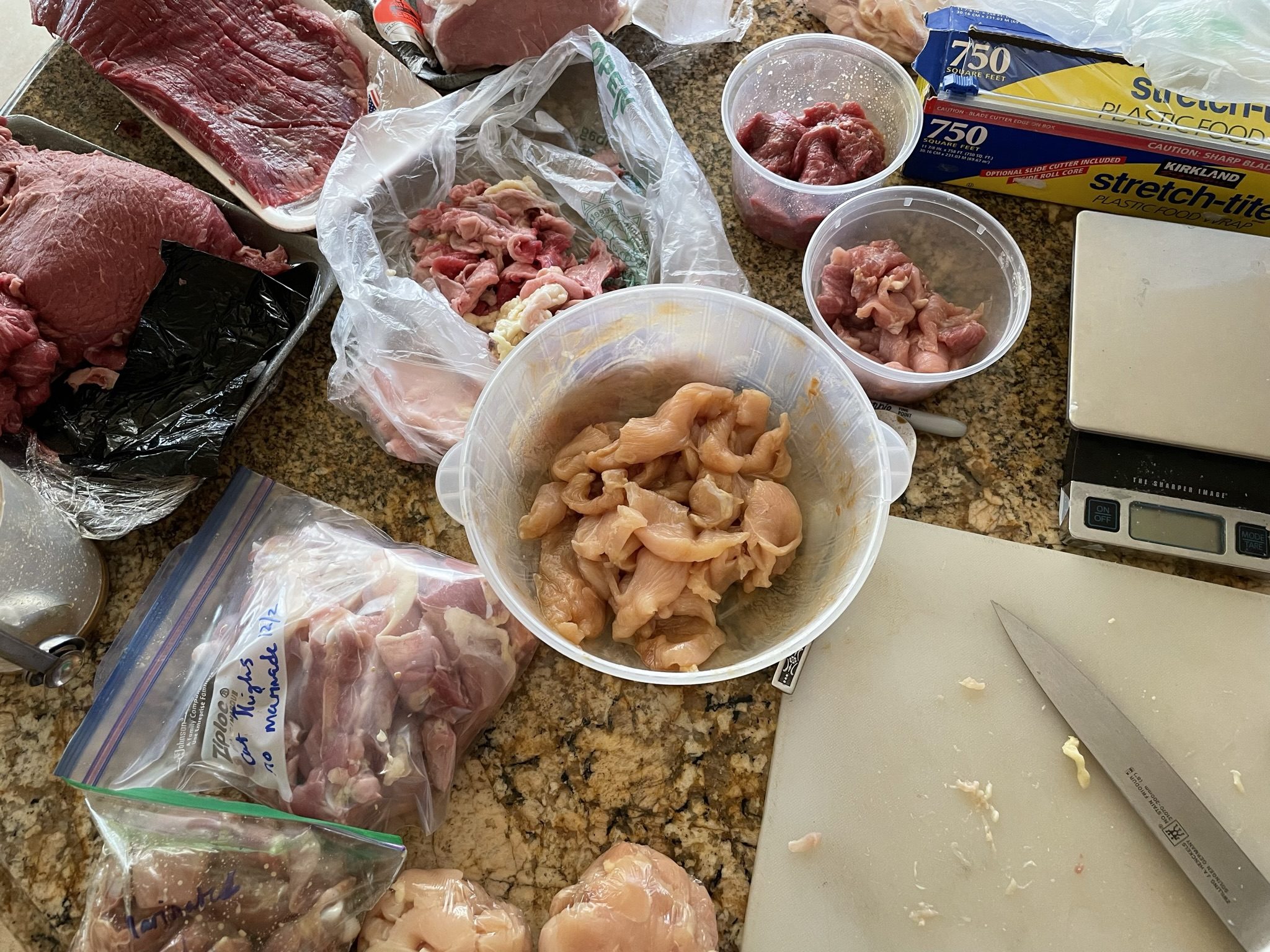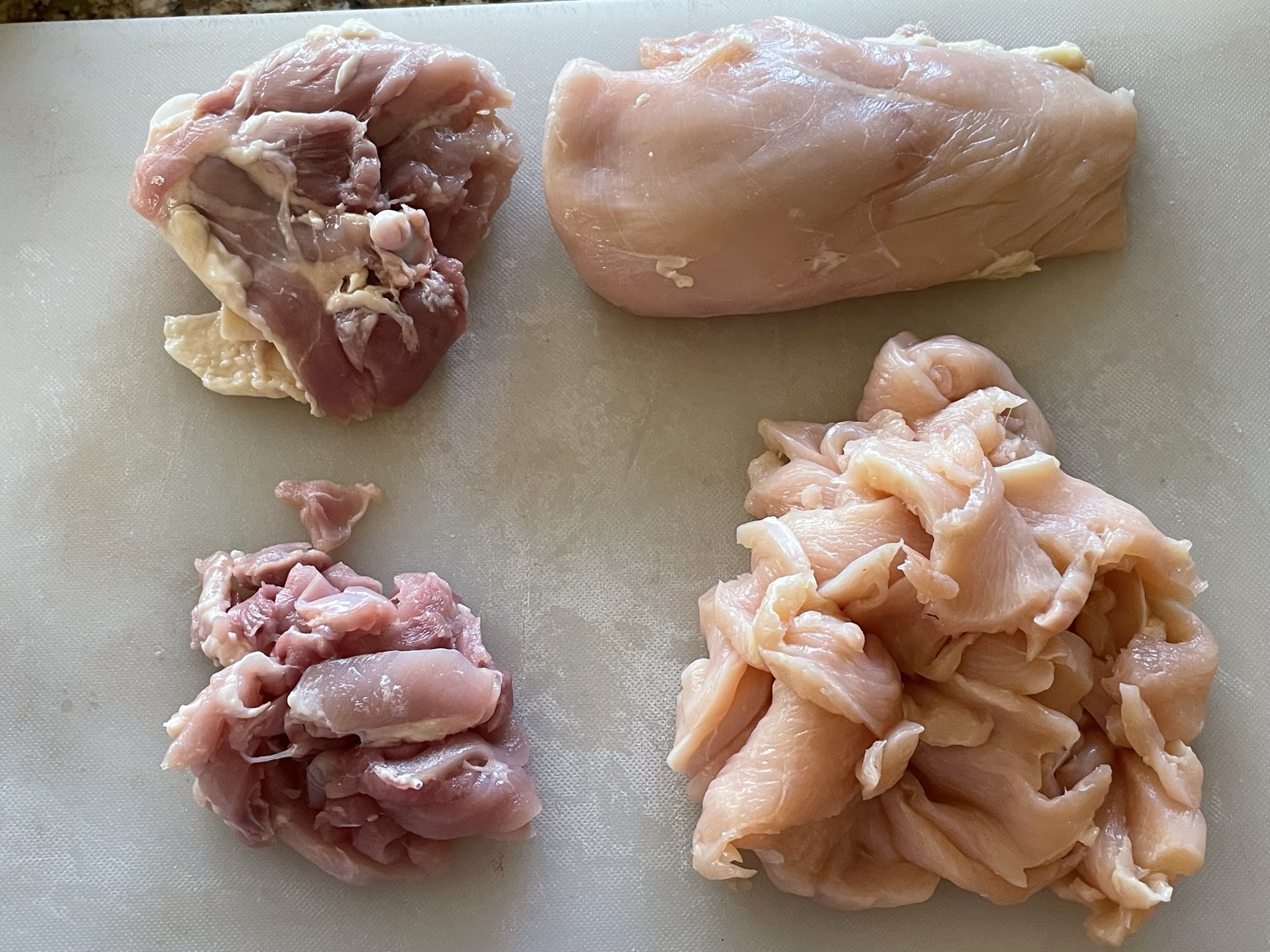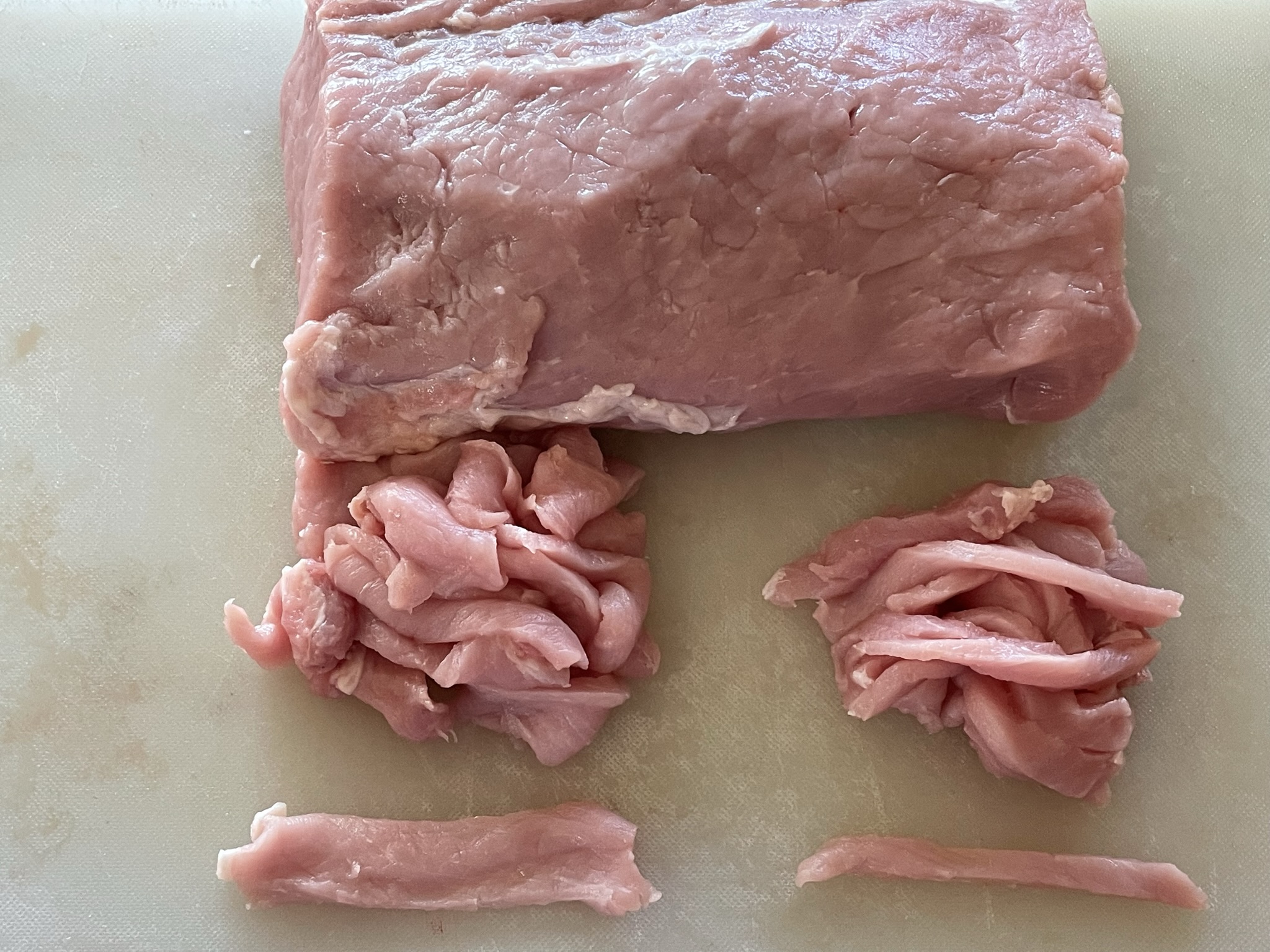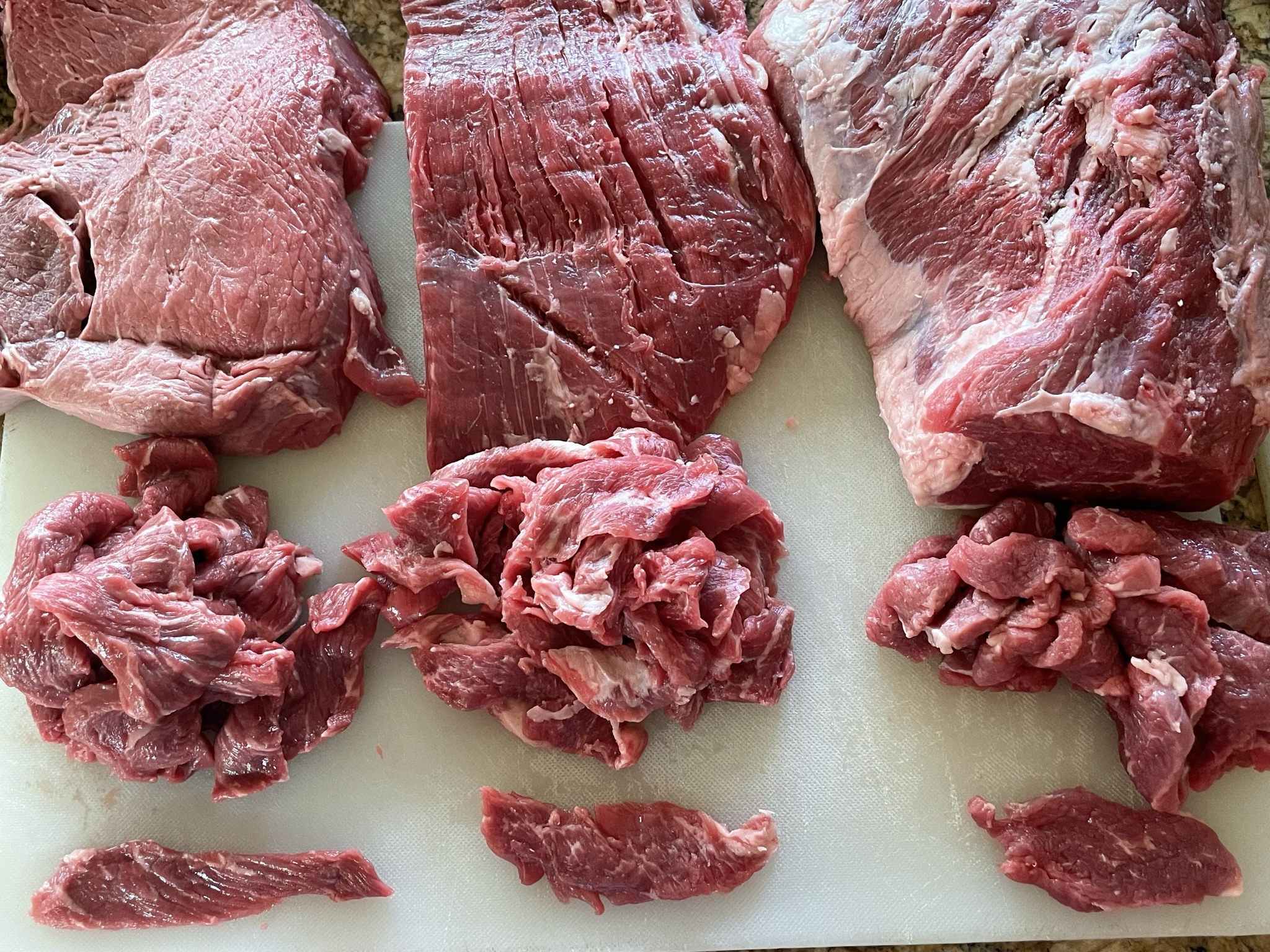0 Comments
share this

Chinese stir fries can be very versatile, using any protein available. However, the types and cuts of meat used would determine whether the meat is lean and tender, fatty or tough. Choosing the correct cut of meat is half the battle; the other half is cutting it correctly. Therefore correctly selecting and cutting the meat for stir fry helps both the aesthetics as well as the tenderness of the meat which affects the overall appeal of the dish.
Traditionally, since Chinese dishes are eaten with chopsticks, the size of the meat and vegetables in the dish should be bite size.
Tips on selecting meat for stir fry.
Chicken
White or dark meat? White meat is less fatty and can be tough if overcooked. However, it is lighter in color and therefore more eye appealing. It is also easier to slice. Dark meat is fattier and is less likely to dry out during stir frying. The dark color of the meat makes it less appealing for stir frying, but if you are new to stir frying, there is more margin for error when using the dark meat. Dark meat does well when a dish requires simmering. It is also difficult to slice, but great if chicken chunks are needed as in the Zucchini Chicken with garlic and black bean sauce recipe.
When cutting chicken for stir fry, boneless, skinless meat is ideal with no fat!

Chicken breast and thigh for stir fry.
Pork
Pork loin is the least fatty and ideal for stir-fry. Other parts of pork such as pork-butt or shoulder is best used when some fat is needed such as for pork dumplings, steamed pork cake or Chinese BBQ pork
When cutting pork for stir fry, remove the fat strip and any sinew. Sinew are tough fibrous tissue that shrink during stir frying, causing the meat to toughen.

Pork loin cut into slices and strips.
Beef
Good steak quality meat is ideal for stir frying. You would want your meat to be tender and not sinewy, but due to the marinade, you do not have to go for the high grade meats. The "choice" grade is good and not too expensive. Tri-tip roasts work well too. Other end roasts tend to be a little too tough for stir fry and are best for braising (slow simmering) for a long time.
When cutting beef for stir fry, remove as much fat and sinew. Cut against the grain (muscle fibers) to help maintain tender pieces of meat.

Sirloin, flank and tri-tip roast cut for stir fry.
Tips on cutting meat for stir fry.
Plastic work surface.
Use a plastic, dishwasher safe cutting board rather than a wooden cutting board to ensure that the board is cleaned properly and free of bacteria.
Sharp knife.
A sharp chef's knife or boning knife is better than a serrated knife as it cuts a smooth piece of meat. Cut using one motion from the heel of the knife to the tip of the knife to get a smooth vs. a jagged piece of meat.
Cutting against the grain of the meat.
Meat is made of muscle. Muscle consist of muscle fibers. Small pieces of meat tend to be more tender when cut against the grain of the muscle fibers.
Cutting at a diagonal.
Sometimes, the strip of meat may be thin. In order to get a larger bite-size piece, holding the knife at a 45 degree angle and slicing the meat at a diagonal will render a larger bite-size piece.
Freeze meat for 30 minutes.
Soft meat is difficult to slice. If you are having trouble slicing thin slices, try freezing the meat for 30 minutes. A stiffer meat is easier to cut.
Ideal size.
Cut the meat into a bite size piece approximately 1.5 - 2 " (4 - 5 cm) x 1 " (2.5 cm) x .25 " (.6 cm)
Need meal ideas?
EASY, HEALTHY, DELICIOUS!
DON'T MISS A RECIPE
